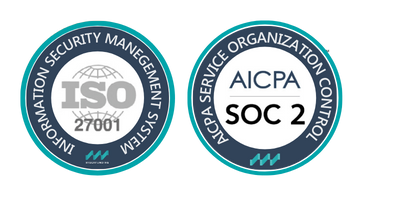The strategies and techniques employed to evaluate and mitigate risks are crucial to the health and success of banks and financial institutions. Yet, traditional approaches to credit risk management, particularly those reliant on manual efforts, are fraught with inefficiencies and inaccuracies. These challenges significantly impact the effectiveness of risk assessments and introduce considerable operational and strategic risks. This exploration into the challenges provides concrete examples that underscore the urgent need for a more modern approach to managing credit risk.
The process of manually gathering both financial data and information on legal events poses a significant hurdle in assessing risk. The effort involved in pulling financial accounts from sources like Companies House, inputting this information into spreadsheets, coupled with the meticulous review of legal incidents such as CCJ’s, is immensely time-consuming. This reliance on manual effort not only opens the door to human error but also introduces variability due to personal interpretation, leading to inconsistencies in the risk evaluation process. When management accounts are received in PDF format, the challenge intensifies as this data must be translated into variables that can be fed into risk models—a process that is both cumbersome and prone to error.
Adding to the complexity is the critical need to thoroughly analyse a company’s structure and the legal standing of both the business itself and its directors. This step is essential for forming a well-founded, data-driven assessment. It involves digging into the intricacies of the company’s organisational framework, scrutinising the backgrounds and roles of its directors, and ensuring that all these elements align with legal requirements and standards. Such an evaluation not only demands access to a vast array of information but also requires the ability to interpret this data accurately. The goal is to paint a comprehensive picture of the company’s operational health and governance quality, which in turn, influences the risk assessment outcome. This level of detail ensures that opinions on risk are not just based on surface-level data but are underpinned by a deep, analytical understanding of the business’s fundamental characteristics.
Understanding the macroeconomic conditions affecting the trading environment for each sector requires a level of analysis that is difficult to achieve without introducing human bias. This is particularly true when attempting to apply a one-size-fits-all approach to diverse and dynamic market conditions.
The limitations of outdated risk models
Numerous financial institutions still depend on risk models that haven’t been refined or modernised to suit the specific needs of SME businesses. These models, traditionally developed and supported within the industry due to their past successes, might not fully capture the complex and diverse risk landscape faced by today’s SMEs. This continued use of models not tailored for current SME risks adds another layer of difficulty to the already challenging tasks of manual data collection and analysis.
The operational and strategic risks
Relying on manual processes for originating loan facilities underscores a critical concern: the practicality of consistently monitoring company risk with rigorous attention. This challenge not only heightens the risk exposure for the institution but also significantly burdens the staff tasked with these responsibilities. Beyond the issue of increased risk, the inherent limitations of this approach become starkly apparent when considering the need for proactive risk management strategies, such as the implementation of early warning indicators.
Traditional methods, which often react to new legal events, necessitate manual intervention for each alert. Given the volume of “noise” in data and alerts, the likelihood of oversight is not trivial. This expectation that analysts can individually address every alert not only seems overly optimistic but also somewhat unrealistic. To anticipate that they could use each alert as a trigger for a comprehensive review—to understand its holistic impact on risk—underscores a misunderstanding of the practical workload and the nuanced analysis required in today’s fast-paced environment.
The manual, alert-driven process fails to account for the strategic importance of early detection and continuous risk monitoring. In a landscape where timely and informed decision-making is critical, relying on reactive alerts that demand manual processing puts institutions at a disadvantage. This approach strains not just the operational capacity of risk teams but also affects their strategic agility. Moreover, the manual, task-oriented nature of these processes can lead to employee dissatisfaction and disengagement, further eroding the effectiveness and morale of the risk management team and underscoring the pressing need for a more sophisticated, proactive risk management framework.
The need for modernisation
This comprehensive review of existing challenges underscores an urgent need for modernising credit risk management. A future-forward approach that harnesses technology for automating data collection and analysis stands out as a pivotal solution. Moreover, the incorporation of customisable, adaptable risk models tailored to specific sectors or the unique needs of a financial institution (FI) or bank elevates this necessity. These models’ adaptability, enriched by the inclusion of additional data variables deemed relevant by the FI or bank, represents a significant leap forward in precision and relevance.
Equally crucial is the system’s ability to directly retrieve financial data from accounting platforms, eliminating layers of manual data entry and enabling real-time risk assessment with the most current financial information. This integration not only streamlines the workflow within financial institutions but also dramatically reduces the window for errors and delays in risk evaluation.
The implementation of such a modernised system promises substantial ROI gains for banks and FIs. By significantly reducing the time and labour involved in risk assessment processes, these institutions can reallocate resources towards strategic growth areas. The enhanced accuracy and timeliness of risk assessments, powered by customised models and direct data retrieval, minimise potential losses from credit defaults and optimise lending decisions. Additionally, the strategic insights gained from a more nuanced understanding of risk profiles enable more informed decision-making and planning, further driving financial performance and competitive advantage.
In essence, modernising credit risk management with technology that allows for model customisation and direct data integration not only addresses the operational and strategic challenges of today’s manual processes, but also sets the stage for transformative growth and efficiency in the financial sector.
The necessity to overhaul credit risk management practices has never been more pressing in the swiftly changing financial environment of today. Transitioning from labour-intensive, antiquated methodologies to a streamlined, technologically advanced system is not just an improvement—it’s a strategic imperative. This shift enables banks and financial institutions to not only bolster their risk management effectiveness but also alleviate the operational strains that have long plagued their teams.
By embracing an integrated, technology-first strategy, these institutions stand to gain immensely. Operational efficiencies are unlocked at unprecedented levels, freeing risk management teams from the mundane, repetitive tasks that have historically consumed their workdays. This, in turn, allows for the reallocation of valuable human resources to areas where they can contribute more significantly to strategic analysis and decision-making. The result? A risk management team that is not only more engaged and satisfied in their roles but also more productive and impactful to the organisation’s overall goals.
The adoption of customised risk models and direct data retrieval capabilities ensures that risk assessments are both more accurate and timely. This precision in risk evaluation can lead to better-informed lending decisions, minimising losses and enhancing profitability. In the broader sense, such improvements contribute to a more robust financial system, one that is better equipped to handle the complexities and volatilities of the modern SME economic landscape.
Ultimately, the transformation towards a more modern, technology-enabled approach to SME credit risk management is a win-win for all parties involved. Financial institutions can enjoy reduced operational costs, enhanced strategic agility, and improved financial performance, while their risk management teams benefit from increased job satisfaction and the opportunity to engage in more meaningful, high-value work. As the financial sector continues to evolve, the institutions that prioritise this transformation will be the ones to lead the way, setting new standards for excellence in credit risk management.
Get in touch today to see how Wiserfunding can help simplify complicated risk management protocols and offer efficient navigation through the risk landscape, or learn more about our solutions here.
SIMILAR POSTS

23 June 2023
BNPL Affordability for SME Lenders
BNPL Affordability for SME Lenders With Buy Now, Pay Later (BNPL) regulation on the horizon in the UK, the concept of borrower [...]

13 December 2022
Wiserfunding and Cardo AI partner to transform credit analytics in the private debt market
Wiserfunding and Cardo AI partner to transform credit analytics in the private debt market We are excited to announce our [...]

5 December 2022
Wiserfunding and Defyca partner to bring SME debt funding on-chain
At Wiserfunding, our mission is to address the $5.4tn SME (Small and Medium Enterprise) funding gap by empowering lenders [...]



